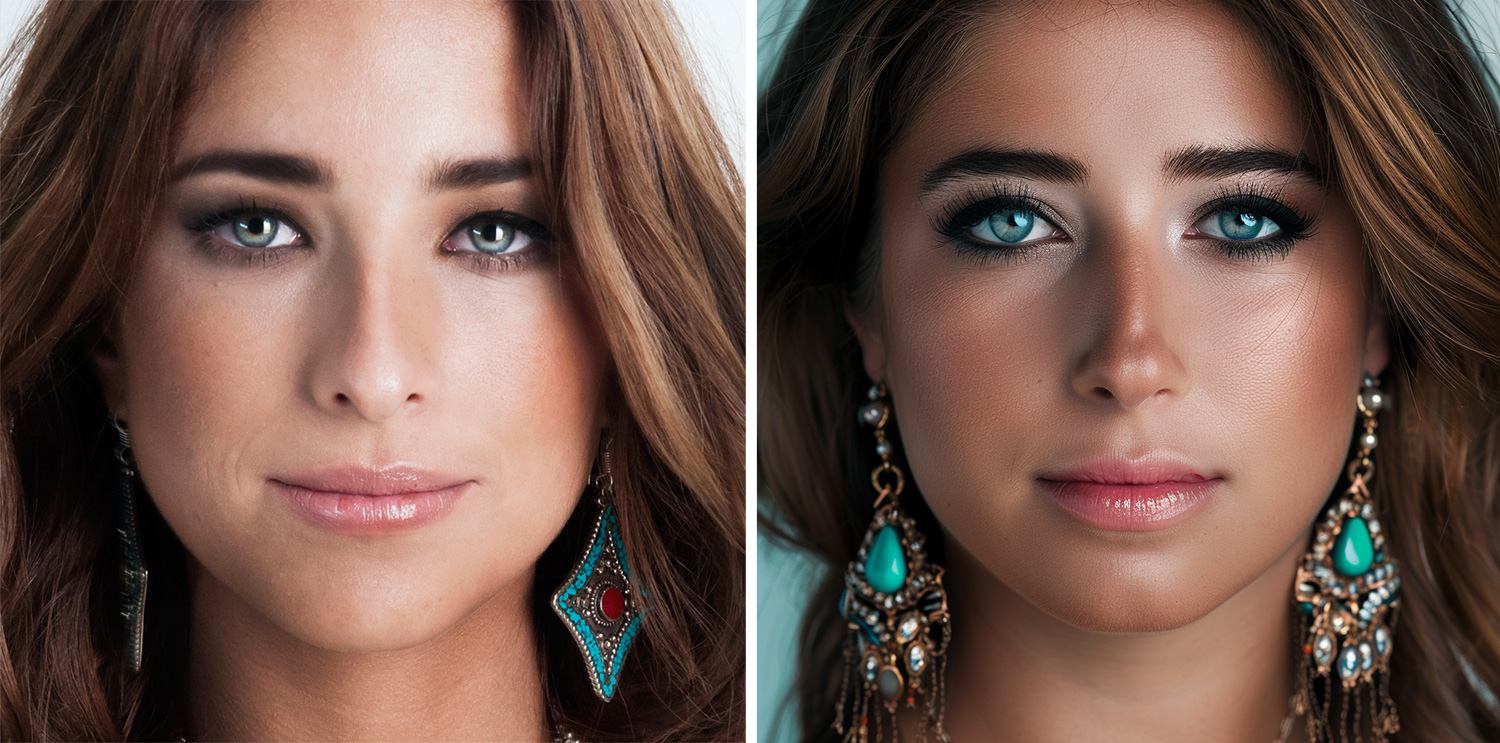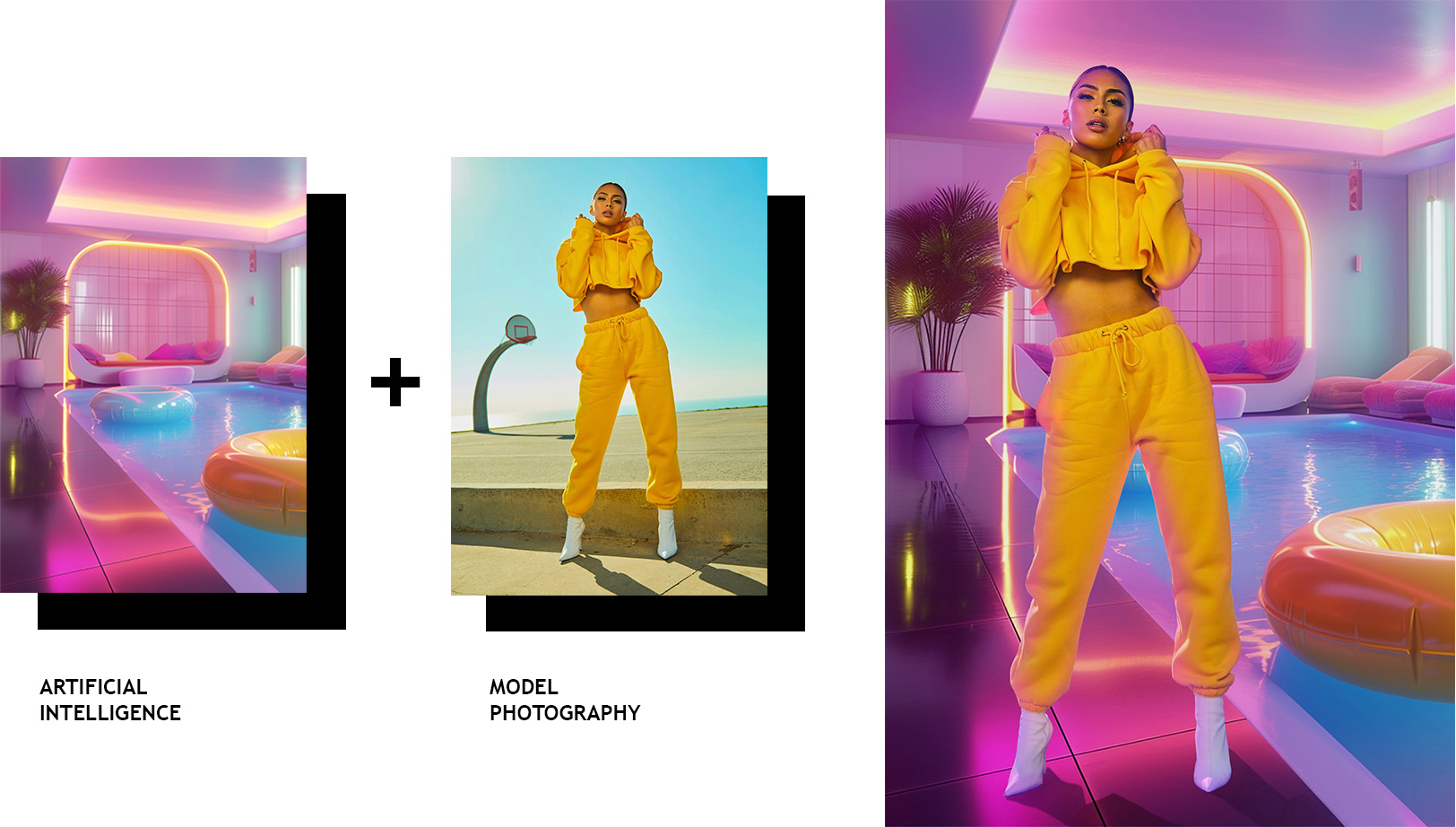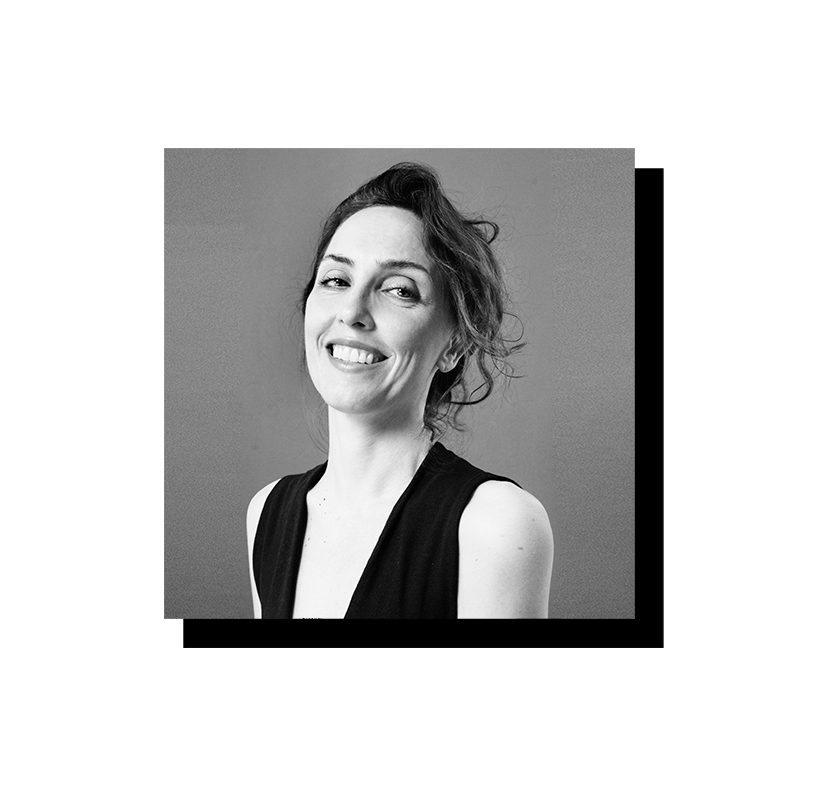AI Photography: Present and Future in Visual Tech
✨ Over the past year, while exploring the potential of Artificial Intelligence (AI) photography or Synthography, I’ve been experimenting with how algorithms respond to a wide range of prompts, observing their particular reactions, limitations, impressive capabilities, and occasional cute mistakes.
Here are some insights so far, to catch up with this promising new tool.
The Magic of Prompting AI Photography
Artificial Intelligence photography performs particularly well with technical photography prompts, which is incredibly exciting for us photographers. You can specify every setting, from shooting angle, distance, and light direction to mood, aperture, shutter speed, and even the type of film or camera body and lens.
It’s also skilled at translating a mood or intention into an image. For instance, asking it for an image that conveys satisfaction, innovation, etc., can yield surprisingly accurate and effective results for your communication purposes.
There are many aspects you can tweak in your image prompts, but often, less is more, as too many details can overwhelm the AI, leading it to select random attributes while ignoring others.
For instance, the prompt for the image below was simply something like “product photography of a shoe designed by Antoni Gaudi”.
⭐️ To automate my prompting, I’ve developed a spreadsheet listing different types of inputs and their potential values to streamline this process, which I will be sharing with my subscribers.
During my testing period, I’ve been particularly focused on how the algorithm reproduces natural objects, especially flowers. While it can perfectly replicate some species, others prove nearly impossible for it to reproduce accurately—and these aren’t even the exotic varieties. Let’s just say it prefers some flowers over others. I do too.
Part of my limited edition prints collection, The Generative Garden. Created with Midjourney and Photoshop.

Is Synthography the best term for this technique?
Regarding the term “synthography” attributed to this type of image generation, I find it quite misleading. The term suggests a synthetic nature, but it doesn’t encompass the full essence of the outcome. I prefer “artificial photography,” which more accurately reflects the legacy of light physics blended with technology. Just saying.

AI’s Creative Eccentricities and Fails
One of the current challenges for AI photography is managing the randomness of the images it produces. In its quest to emulate reality, algorithms show remarkable skill with objects and synthetic materials, capturing volume, space and light with fine detail. However, when it comes to the complex textures of skin, hair, or the human gaze, it gets lost in the randomness. How can humans have an undetermined quantity of hair yet a determined quantity of fingers? Trying hard to interpret human creativity, it struggles between safe patrons and radical innovation. Normal.
When you ask the AI to create an image of hands making a heart shape, you may need to specify how many fingers each hand should have, among other details.

However, to manage this, there are parameters you can adjust in Midjourney (my AI image generator of choice) to temper the AI’s bold creativity. For example, the –stylize parameter can be adjusted from 0 to 1000, with 100 being the default setting.
Key Fixes to Level Up
Another challenge is maintaining consistency across different outputs within the same project. The same prompt can lead to infinitely varied results, making it particularly tricky to reproduce the same character in multiple creations, for example. Although the –seed parameter can help ‘anchor’ the AI’s creativity, it still requires (way) further refinement.
“Believe nothing you hear and
Edgar Allan Poe remixonly one halfnothing that you see”.

Ethics of Photorealism and Deep Fakes
You might think distinguishing AI photography from digital or traditional photography is straightforward when noticing these details. Yet, if you’re not actively looking for differences, it’s easy to accept the images as reality. Our brains are wired to relate new visuals to previous experiences—whether you call this being realism-biased or optimistically realistic. Consider impressionism, for example.
The ethical considerations surrounding AI-generated images are significant, yet this isn’t a new dilemma. Photoshop has been ‘tricking’ us for decades with little backlash compared to the scrutiny AI now faces.
I believe we humans have an intuitive ability to discern real from fake, though we’re not always consciously aware or knowledgeable enough to do so effectively. It’s like having our own internal algorithm, only much more complex. My advice? Train your own ‘algorithmic’ database (AKA culturize yourself).
What Actual Value is AI Adding to the Visual Cultural Industry Today?
So, what are the benefits of artificial photography in commercial applications right now? Firstly, it allows us to generate visual ideas or drafts quickly, enhancing the creative process. For actual production, though, it still requires integration with “creative intelligence”, such as digital artistic retouching in Photoshop.

An interesting aspect is the ability to animate AI photography using other AI tools, expanding the possibilities for dynamic visual content.
From a cultural perspective, AI photography introduces a shift in creativity, offering new ways of expression and opening up an expansive conceptual space for visual perception and artistic exploration.
To be continued.



Leave a Reply